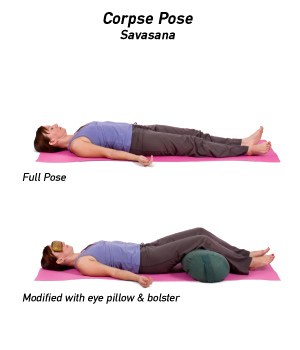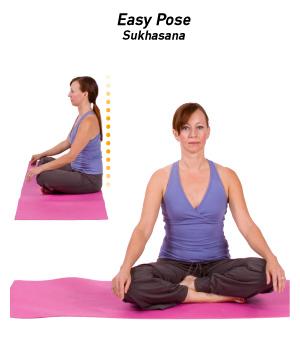How to Do Pranayama Breathing in Yoga

If you're stressed out, worn out, emotionally off-kilter, or making your way through a challenging yoga class, pranayama breathing can renew and sustain you. Learn the basics of breath control with this pranayama primer.
Breathing Exercises
The fourth of the classical eight limbs of yoga, pranayama (prah-nah-YAH-mah) refers to yogic breath-regulation exercises. "Prana" is the vital life force that sustains all of creation (known as "chi," "ki," or "qi" in other Eastern traditions). Controlling one's prana through breathing exercises steadies the mind and cleanses the body, thus boosting the overall health and well-being of the practitioner.
There are several yogic breathing techniques, each with specific benefits, but only a few are taught in typical Western yoga classes. Here's a look at the most popular pranayama exercises, how to do them, and the benefits you'll gain when practicing them consistently and correctly.
Please do not attempt any of these pranayama exercises for the first time without the guidance of a teacher, particularly if you have any respiratory conditions such as asthma or emphysema.
Three-Part Breath: Dirga Pranayama
Known commonly as Three-Part Breath, Dirga Pranayama (DEER-gah prah-nah-YAH-mah) is usually the first breathing technique taught to new practitioners. It brings awareness to the present moment and calms the mind, and is often used at the very beginning of a yoga practice to settle in and prepare oneself for practice and meditation.
This technique is particularly beneficial in everyday life, because it requires no special sound or position to achieve a grounded and relaxed state of awareness.

- Sit in a comfortable cross-legged position like Easy Pose (Sukhasana), or lie on your back in Corpse Pose (Savasana).
- Rest one hand on your belly and one hand on your rib cage.
- Close your eyes, and breathe deeply but naturally.
- Begin to focus your awareness on the breath as it moves in and out of your body.
- Feel the lift of your belly and the expansion of your ribs on your inhalations; and the slight compression of your ribs and drop of your belly as you exhale.
- Next, bring your bottom hand to your chest, just below your collarbone. Breathe all the way into this area and allow your chest to rise slightly; then exhale and let it go.
- Feel your belly lift, ribs expand, and chest lift as you inhale; on your exhalations, notice how your chest drops, ribs contract, and belly lowers.
- Release your arms and focus your mind on your breath, inhaling and exhaling fully.
Ocean Breath: Ujjayi Pranayama
Literally meaning "victorious," Ujjayi Pranayama (ooh-JAH-yee prah-nah-YAH-mah) is also commonly known as Ocean Breath. During Ujjayi, the practitioner completely fills the lungs while slightly contracting the throat and breathing through the nose. This breath technique is used throughout an Ashtanga or Vinyasa yoga class to help practitioners stay warm, calm, and present.
Ujjai breath also calms the mind and is said to be highly beneficial to those suffering from insomnia and mental tension.

- Sit in a comfortable cross-legged position such as Easy Pose (Sukhasana), Hero Pose (Virasana), or Thunderbolt Pose (Vajrasana).
- Inhale deeply through your mouth. Feel the air of your inhalations passing down through your windpipe.
- Now slightly contract the back of the throat, as you do when you whisper, and exhale. Imagine your breath is fogging up a window.
- Keep this contraction of the throat as you inhale and exhale, then gently close your mouth and continue breathing through your nose.
- Concentrate on the sound of the breath, which will soothe your mind. It should be audible to you, but not so loud that someone standing several feet away can hear it.
- Let your inhalations fill your belly, ribs, and chest; completely release the air on your exhalations.
- Begin to synchronize your breath with your movements, inhaling with upward moves and exhaling with downward moves.
Alternate Nostril Breathing: Nadi Shodhana Pranayama
Nadi Shodhana Pranayama (NAH-dee shoh-DAH-nuh prah-nah-YAH-mah) — literally "channel clearing" — is a purifying pranayama that alternates the blockage of each nostril to channel air in a concentrated flow. It balances the nadis, or channels of energy in the body, activating and harmonizing the left and right hemispheres of the brain to ease stress and anxiety.

- Sit in a comfortable cross-legged position such as Easy Pose (Sukhasana).
- Close the right nostril with your right thumb.
- Inhale deeply through the left nostril.
- Close the left nostril with the ring finger of your right hand as you release the right nostril.
- Exhale slowly through your right nostril.
- Keeping the left nostril closed, inhale deeply through your right nostril.
- Seal the right nostril again with your thumb, then release the left nostril.
- Exhale out of the left nostril. You should now be in the original position, with the thumb sealing the right nostril.
- Repeat the process ten times, gradually increasing the number of repetitions.
- Once you gain full breath control during Nadi Shodhana, begin to hold your breath for a moment at the top and bottom of each inhale/exhale cycle. Never strain; let this next stage develop gradually.
Light Skull Breathing: Kapalabhati Pranayama
Kapalabhati Pranayama (kah-pah-luh-BAH-tee prah-nah-YAH-mah), which literally means "light skull breathing," is an intermediate to advanced breathing exercise. Do not attempt to practice it without the guidance of an experienced and knowledgeable instructor. This exercise consists of short, powerful exhales and passive inhales. Also known as Skull Brightener Breath, Kapalabhati is a traditional internal purification exercise, or kriya, that tones and cleanses the respiratory system by encouraging the release of toxins and waste matter. It acts as a tonic for the system, refreshing and rejuvenating the body and mind.

- Sit in a comfortable cross-legged position such as Easy Pose (Sukhasana), Hero Pose (Virasana), or Perfect Pose (Siddhasana).
- Rest your hands on your knees, palms facing upward.
- Bring your awareness to your lower belly, or place you hand on this area.
- Inhale through both nostrils deeply.
- Contract your low belly or use your hand to press this area, forcing out the breath in a short burst.
- As you quickly release the contraction, your inhalation should be automatic and passive — your focus should be on exhaling.
- Begin slowly, aiming for 65-70 contractions per minute. Gradually quicken the pace, aiming for 95 to 105 exhalation/inhalation cycles per minute. Always go at your own pace, and stop if you feel faint or dizzy.
- After one minute of the exercise, inhale deeply through the nostrils, and then exhale slowly through your mouth.
Let It Out
Pranayama exercises can benefit the mind and body in many ways and on many levels, whether physical, emotional, mental, or spiritual. Remember to take it slowly and to build on your experience to further develop your breath control.
Always consult a teacher on the proper technique of a particular breathing exercise before attempting it, and stop if you're feeling faint or dizzy. With practice, you'll learn to guide your breath — so your breath can guide your practice.

